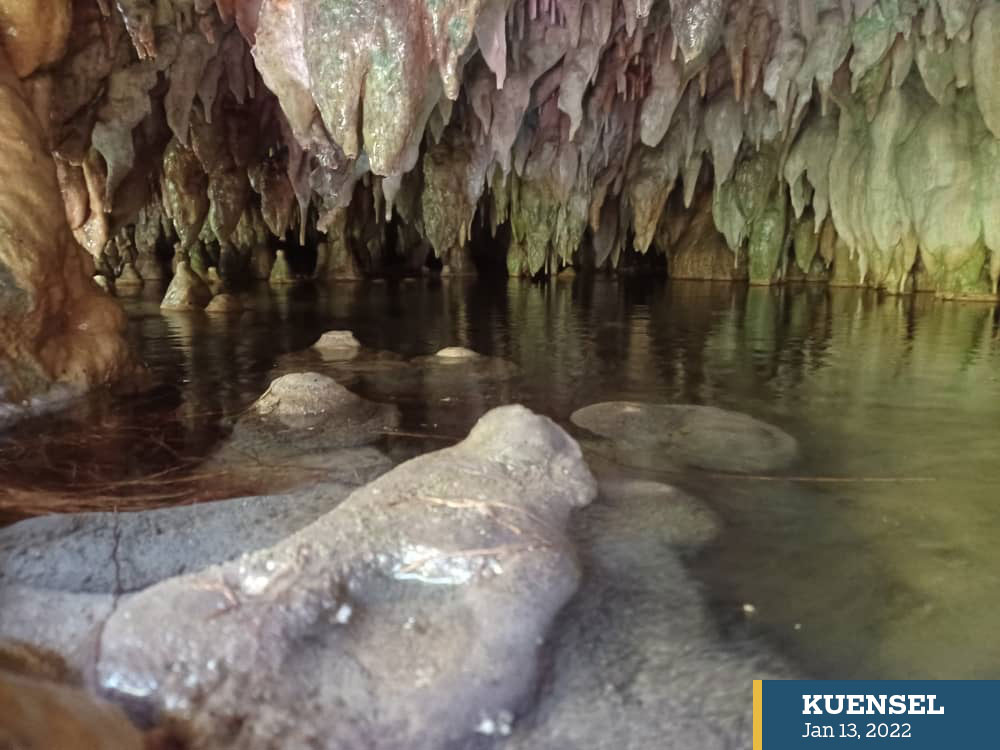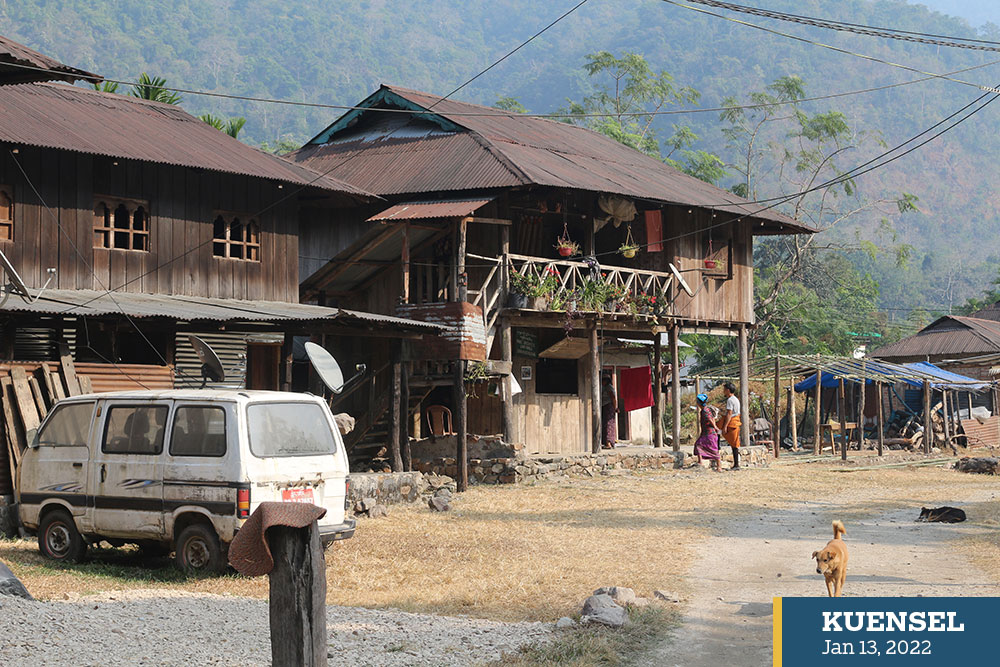Choki Wangmo | Chhukha
Within five decades, Aum Kaam saw her hometown grow from a village into a bustling trading centre. She also witnessed its downfall and resurrection in recent days.
Originally from Zamsa in Bongo gewog, the 59-year-old grew up on inherited land at Jigmechhu. She remembers her parents cultivating maize and tiger grass plants on their land.
The small village with around 40 households saw a sudden boom once Kelzari road was built. “The village developed into a town where people from across the region came to trade,” she recalled.
Choki from Baeyul Kunzang used to walk six hours from his village to Jigmechhu just to get a glimpse of the town. For three months in winter (nineth to 12th lunar months), he said that the town would be bustling with life.
“People from Zamsa, Shakho, Kelzari, Pabji, and Phuentsholing, visit the trading centre,” said Choki, 49.
Jigmechhu’s close proximity to the border helped improve its business prospects. Business people from across the border brought in goods from India via Shakho, located an hour away on foot from Jigmechhu.
“They brought in many types of goods; I was excited about choices of garments sold at cheaper rates,” he said.

Ami Ney
Bhutanese sold mustard, broom, and mandarin.
Wangchuk Dorji remembers carrying mandarin from his village in Baeyul Kunzang to Jigmechhu. The 49-year-old recalls Jigmechhu as a trading centre for mandarin in the 1990s.
The area was once even identified for the Wangchu hydropower project.
Jigmechhu’s glory days ended in the early 2000s with the problem of military insurgents in the south. Gradually, people moved to other places. Mandarin growers took their produce to Kelzari depot.
“People abandoned Jigmechhu village. It was a ghost town,” Wangchuk Dorji said.
After the problem ended, people gradually started moving back in. But it could never become a town again. People started growing areca nut and mandarin. Some shops opened.
What remains of this once popular town are some rickety wooden houses, huts, and sheds. There is hope for the residents, however.
With the ecotourism site developed a few years ago by the dzongkhag economic development sector, the town is coming back to life.
“Domestic campers at the site are helping us earn. Our earning in a day has increased to thousands in a day compared with a few hundred in the past,” said aum Kaam.
The pilgrimage sites and other services, she said, attracts people from across the towns in the country.
She provides hot stone bath services to the visitors at the campsite. “I am planning to improve the services and build a new house,” she added. She rents a meeting hall to visitors at the campsite too.
“The campsite helped people relax after a tiring battle with the pandemic. We are trying to improve the campsite to enhance visitor experience,” said Wangchuk Dorji, the campsite manager.
Tsheten Dorji runs a restaurant and a general shop in the town. He is hopeful that the residents would benefit from the campsite as the number of visitors increases in the future.
“Once the town develops, benefits will trickle down to people,” he said.
Chhukha dzongdag Minjur Dorji, however, said that there were no plans to develop the area.


